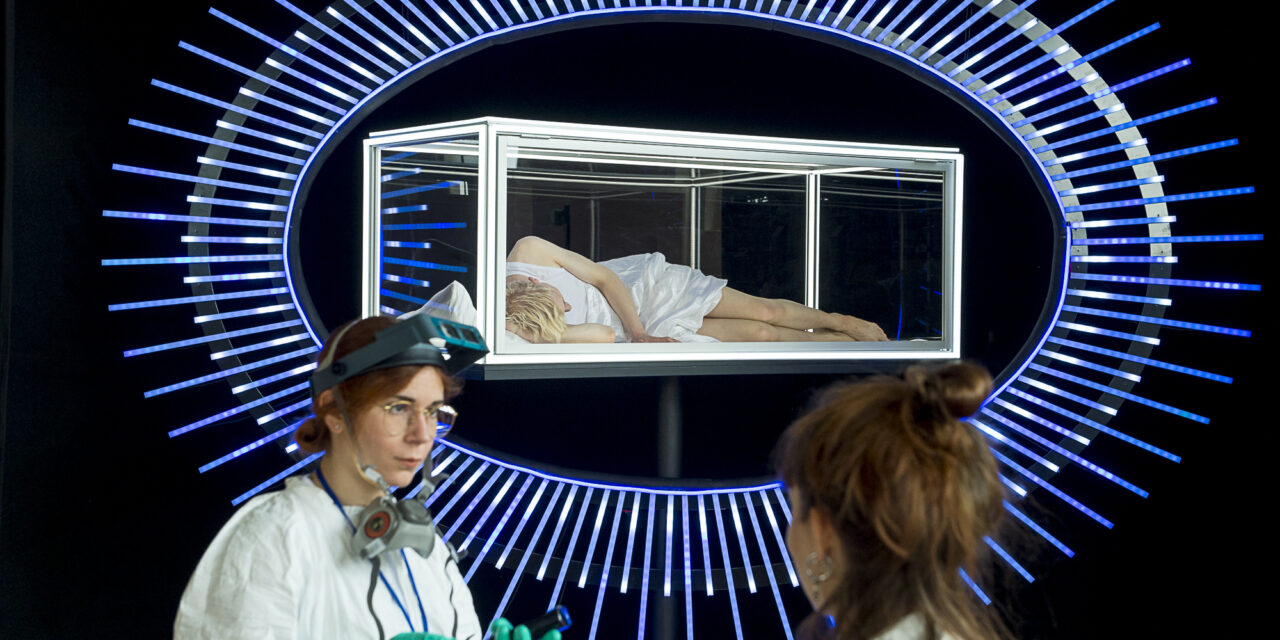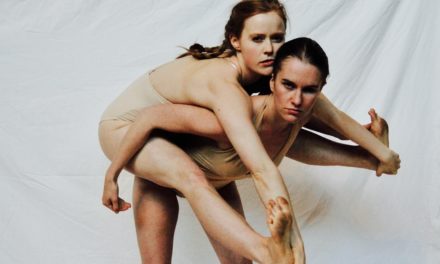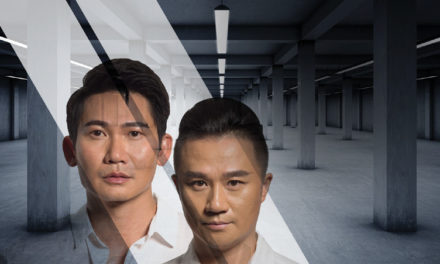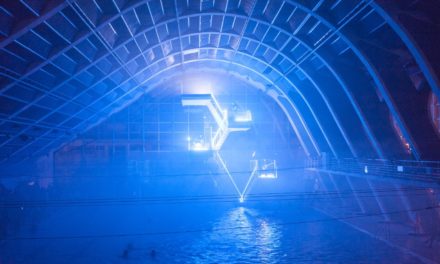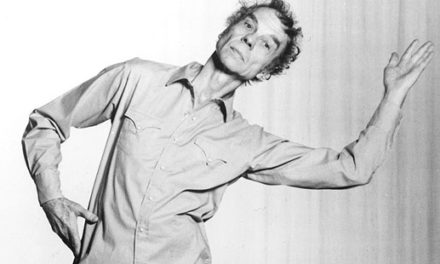The fourteenth installment of the Prague Quadrennial of Performance Design and Space (PQ) kicked off this week, welcoming professional and student theatre artists from 80+ countries for a week of performance and cross-pollination. The Exhibition Grounds, a massive nineteenth-century World’s Fairgrounds, is buzzing with energy and talent.
A maiden stroll through the Central Hall proves beyond a doubt that this is not a conventional theatre festival. Performances were going on all around, ranging from small scale installations to curated excursions. When I entered, I was greeted by a dancing fox, a massive upcycled puppet from Mexico’s La Liga Teatro Elástico. Later, my wait in a line was broken up by a sudden march of dancers in yellow robes and big friendly blue fish heads, Completo Conejo from Chile. I bent down to take a picture and noticed that they all started making rectangle phone-photo hands – they were copying me. I blew them a kiss, they blew kisses back and marched on.
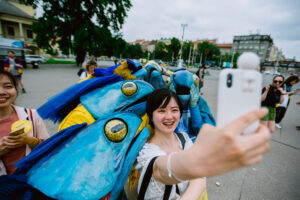
Completo Conejo Fishpeople. Photo by Jan Hromadko.
The festival organizers give just as much space to the designers. From Russia, I saw “Theatre of a Madman,” a massive painted wooden forest, equally nightmarish and fairy tale-esque. I kept expecting Baba Yaga to jump out and steal me away. From Costa Rica, clothing in all shades of green to represent a “Scenographic Hypothesis of a Green Territory,” a comment on migration, socialization, and ecology. For “1600 Feet Under the Sea”, designers from Israel brought examples of their costume and stage design in black rectangular cases that lay on the floor. You lifted their lids to see their contents, like exhuming a corpse. Denmark had a “virgin born in 1987” rotating in a clear case, and you could enter a raffle for a drop of virgin blood. I lost, but they had really made me want it!
Precisely at the intersection of performance, design, and space is VR/augmented reality. The outward application of this technology hasn’t changed much since it was just a vision of the future. The big clunky helmet from the Aerosmith video “Amazing” is basically still there, although the interface has changed since Alicia Silverstone used it to mess with an adolescent Edward Furlong. VR potentially has some marvelous potential. I’ve seen it used to recreate a long-defunct designer’s studio for a museum exhibition and to transport students of French to Paris. But basically, it’s still best for playing games and flexing design muscle.
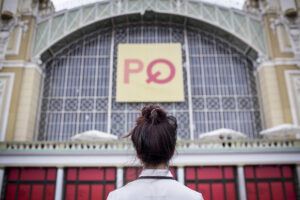
The Prague Exhibition Grounds and a guest. Photo by Vojtěch Britnický.
I tried two VR experiences today at PQ, and they used the technology to achieve opposite ends. Amazingly, they had the same concerns: waste and sustainability. The first, from Ireland, was called “Design & Destroy,” directed by Jo Mangan. It began by bringing me into the home office of a theatre artist, a kindly, older man, who spoke about the process about collaborating with designers. It was extraordinarily normal. He wore a sweater and sat in a comfortable chair. The six-minute then cut to performers on stage – a young man rapping, a woman dancing. There were some high-tech animations in between, a free-floating human eye for example, but it was mostly a three-dimensional, three-hundred-sixty-degree rendering of every-day reality. And it was extraordinary. The theme of the video was the unavoidable wastefulness of the theatre business. Costumes and sets are designed, constructed, used and then thrown out. What else can you do? It ended back in the office of the kindly old man, where he fed glossy photos into the fire. I was so transfixed by this simple action, I didn’t notice that the credits were rolling. To be fair, I had to lift my head up to see them.
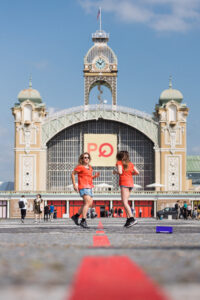
Photo by Krystof Kalina.
The second variation on the theme was a massive, all-encompassing 20-minute voyage into a wholly different world, which is actually two different worlds: a beautiful, sensuous, heavenly zone and the material realities that allow it to operate, the handling of biological and industrial waste that underlies leisure and intellectual activity. “Aporia. The City and the City” from Poland, deals with some of the same themes as Jordan Peele’s Us in full, frightening immersion. With a neon-pastel color scheme, I moved through connecting passages to a market, a palace, an orgy, and a bathroom. Lumpy homunculi walked by me, sometimes into me, evoking real feelings of anxiety as I tried to get out of their way. Giant flowy disembodied hands waved like a sea anemone. Fat-bellied children chased was seemed to be giant butterflies and turned out to be fresh air fish. All the while, a soothing female voice explained the organization of this society: the recycling of human waste, the growth of mushrooms, the Temple of Contemplation at the center of it all. It was equal parts erotic and disgusting. Like an internet date.
The first VR experience used the technology to augment and comment on the current state of an ancient premise: theatre as a basic spatial relationship between two kinds of people, the performers, and the viewers. The second VR experience seemed like the final frontier of theatre. I was all alone in my helmet, and there wasn’t another person anywhere in sight. An enormous amount of talent and human labor went into that project, but in the end, in a room with people from 80+ countries, I felt all alone.
I anticipate seeing a lot more commentary on the ecology and the Anthropocene as the week goes on. What does it mean to be human in a world that has been undeniably destroyed by humans? (Ok, some people deny it, but they tend not to attend international festivals of Performance Design and Space.) What power does performance have and where do we go from here? Follow me at PQ2019, we’ll find out together.
This post was written by the author in their personal capacity.The opinions expressed in this article are the author’s own and do not reflect the view of The Theatre Times, their staff or collaborators.
This post was written by Abigail Weil.
The views expressed here belong to the author and do not necessarily reflect our views and opinions.

